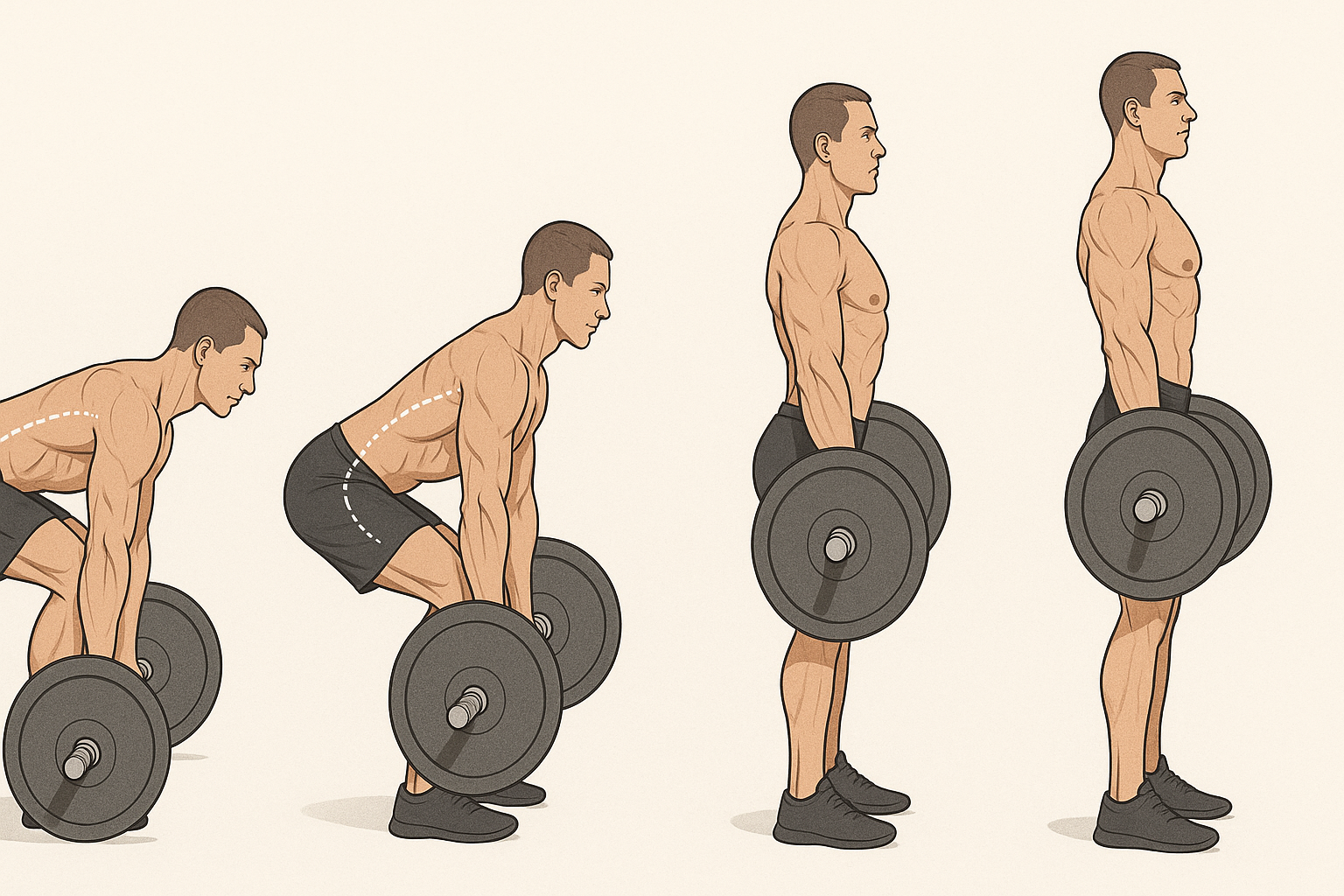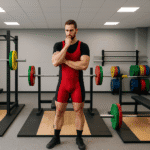The deadlift stands as one of the most fundamental and effective exercises in strength training, targeting multiple muscle groups while building functional strength that translates to everyday activities. Whether you’re a beginner looking to master proper form or an experienced lifter seeking to refine your technique, understanding both conventional and sumo deadlift variations is essential for maximizing your training results.
What is a Deadlift?
A deadlift is a compound exercise that involves lifting a loaded barbell from the ground to hip level, then lowering it back down in a controlled manner. This movement pattern mimics real-world activities like picking up objects from the floor, making it one of the most practical exercises you can perform.
Benefits of Deadlifting
Muscle Development
Deadlifts work more muscles simultaneously than almost any other exercise, including:
- Posterior chain: Hamstrings, glutes, and erector spinae
- Upper body: Lats, traps, rhomboids, and rear deltoids
- Core: Deep stabilizing muscles of the abdomen and lower back
- Grip strength: Forearms and hands
Functional Strength
Regular deadlifting improves your ability to lift objects safely in daily life while reducing the risk of back injury when performed with proper form.
Hormonal Benefits
As a compound movement involving large muscle groups, deadlifts can stimulate the release of growth hormone and testosterone, supporting overall muscle development and strength gains.
Conventional Deadlift: The Classic Approach
The conventional deadlift is the traditional form of the exercise, characterized by a narrower stance and hands positioned outside the legs.
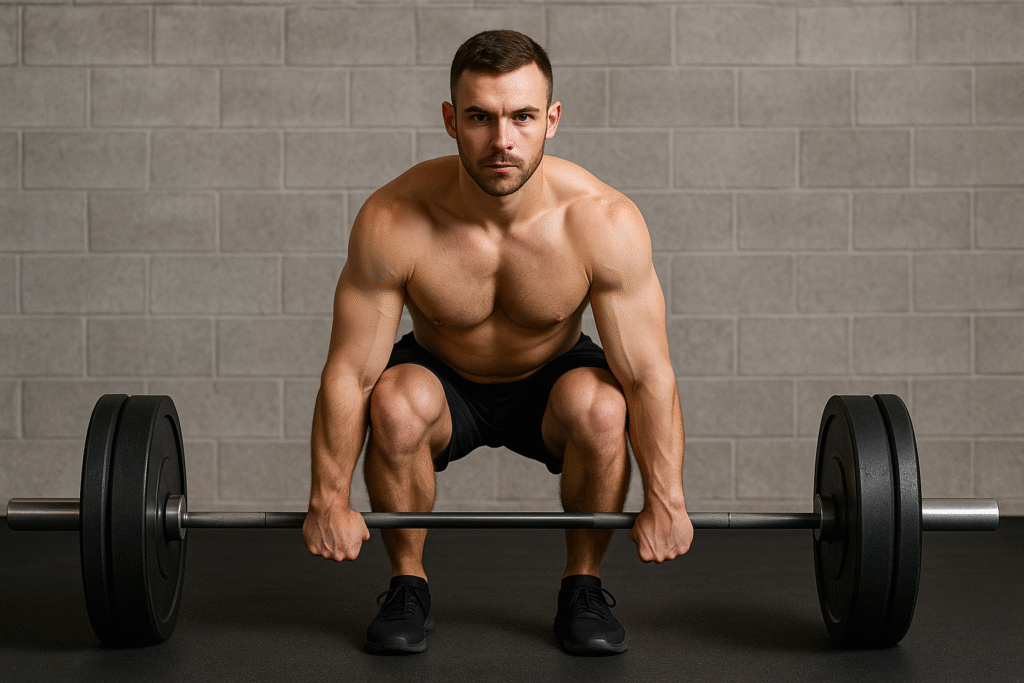
Conventional Deadlift Setup
Foot Position
Stand with feet hip-width apart, toes pointing slightly outward. The barbell should be positioned over the middle of your feet, approximately one inch from your shins.
Grip
Use an overhand grip or mixed grip (one palm facing up, one down) with hands positioned just outside your legs. Your arms should hang straight down from your shoulders.
Body Position
- Hinge at the hips and bend your knees to reach the bar
- Keep your chest up and shoulders back
- Maintain a neutral spine throughout the movement
- Engage your core muscles for stability
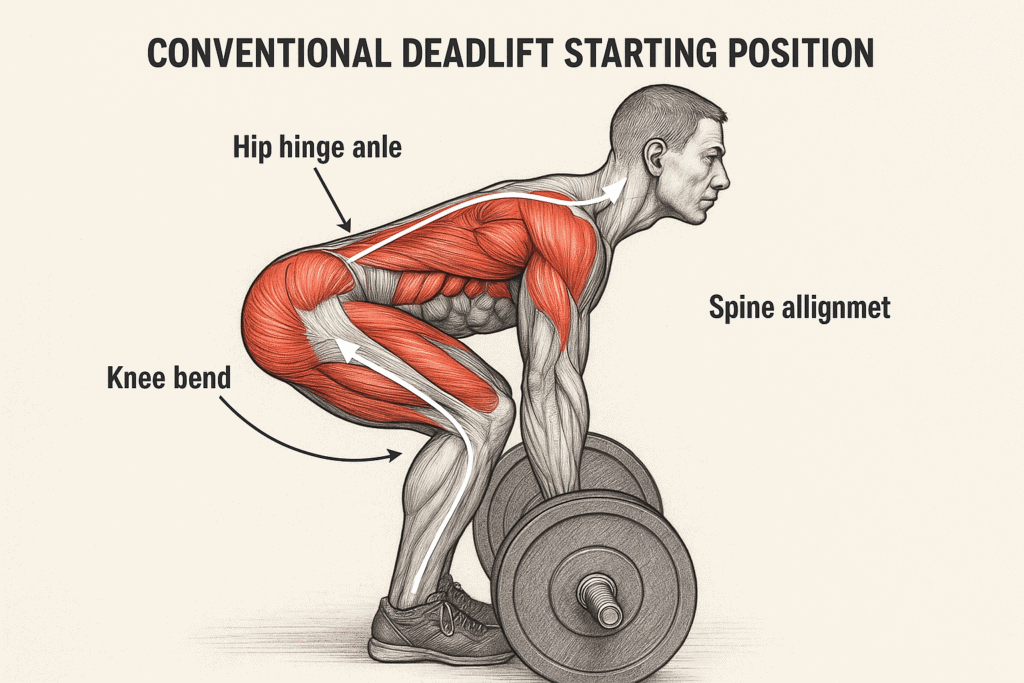
Conventional Deadlift Execution
The Lift
- Take a deep breath and brace your core
- Drive through your heels while simultaneously extending your hips and knees
- Keep the bar close to your body throughout the movement
- Stand tall with shoulders back once you reach the top position
The Descent
- Initiate the movement by pushing your hips back
- Allow your knees to bend naturally as the bar lowers
- Maintain control throughout the descent
- Touch the plates lightly to the ground before your next repetition
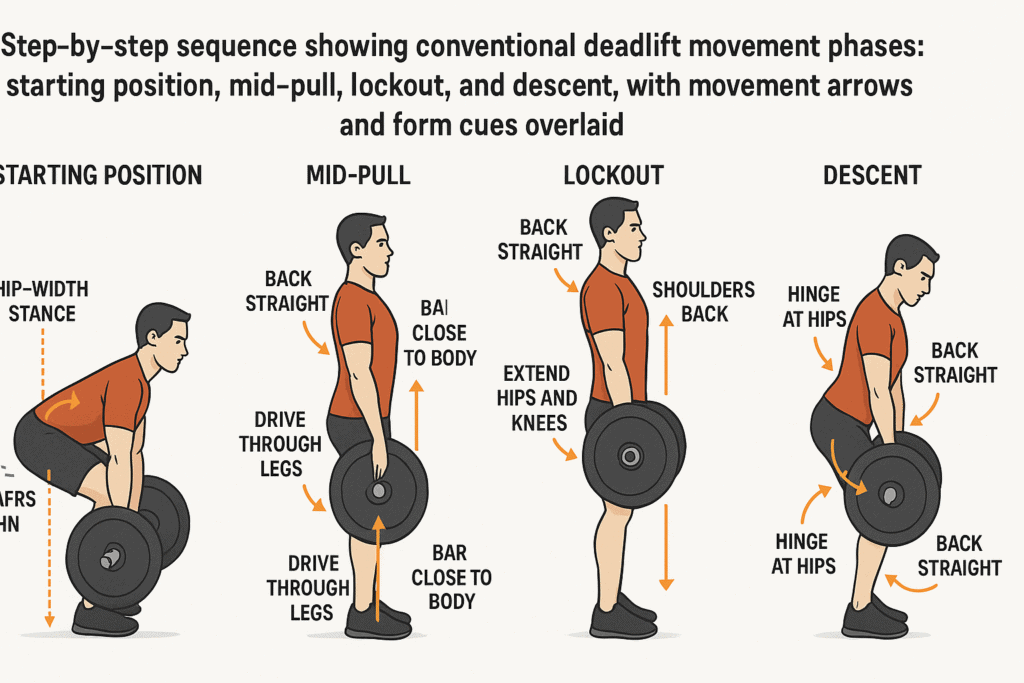
Common Conventional Deadlift Mistakes
- Rounded back: Keep your chest up and shoulders back
- Bar drifting away: Maintain contact with your legs throughout
- Knee lockout first: Hip and knee extension should be coordinated
- Looking up: Keep your neck in a neutral position
Sumo Deadlift: The Wide-Stance Alternative
The sumo deadlift features a wider stance with hands positioned inside the legs, creating a more upright torso position and different muscle emphasis.
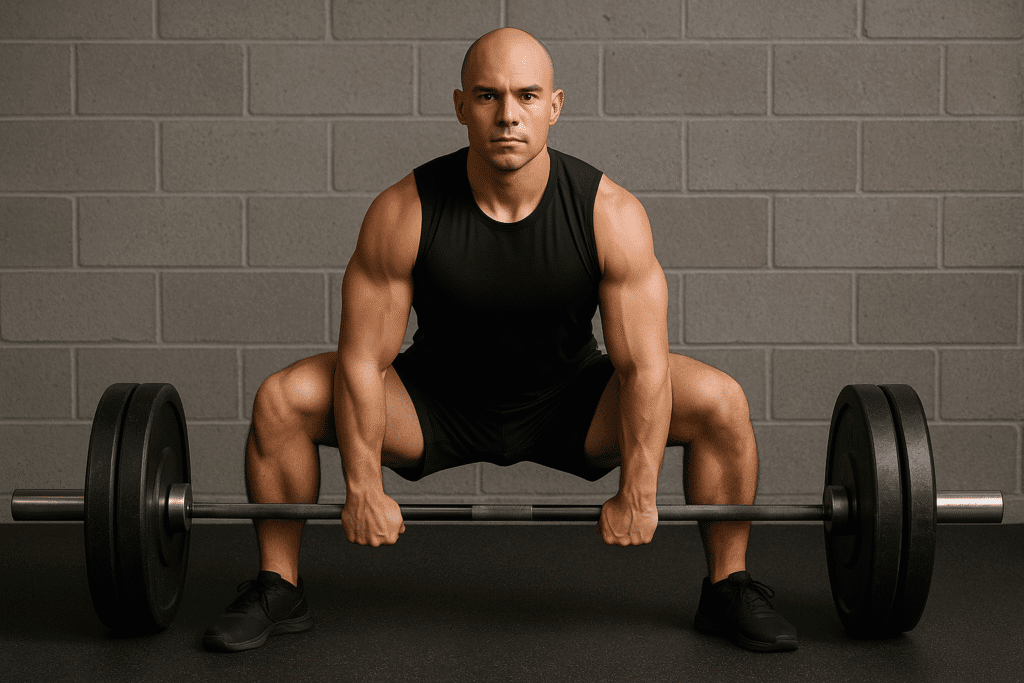
Sumo Deadlift Setup
Foot Position
Stand with feet positioned significantly wider than shoulder-width, with toes pointed outward at approximately 45-degree angles. The exact width depends on your individual anatomy and flexibility.
Grip
Grip the bar with both hands using an overhand or mixed grip, positioned inside your legs. Your arms should hang straight down between your legs.
Body Position
- Squat down to reach the bar while keeping your torso more upright than in conventional deadlifts
- Keep your knees tracking over your toes
- Maintain a strong, neutral spine
- Engage your core and prepare for the lift

Sumo Deadlift Execution
The Lift
- Take a deep breath and engage your core
- Drive through your heels while focusing on spreading the floor apart with your feet
- Extend your hips and knees simultaneously
- Keep your chest up and shoulders back throughout the movement
The Descent
- Control the weight as you reverse the movement
- Allow your hips to move back while your knees track over your toes
- Maintain tension in your posterior chain
- Lower the weight to the starting position with control
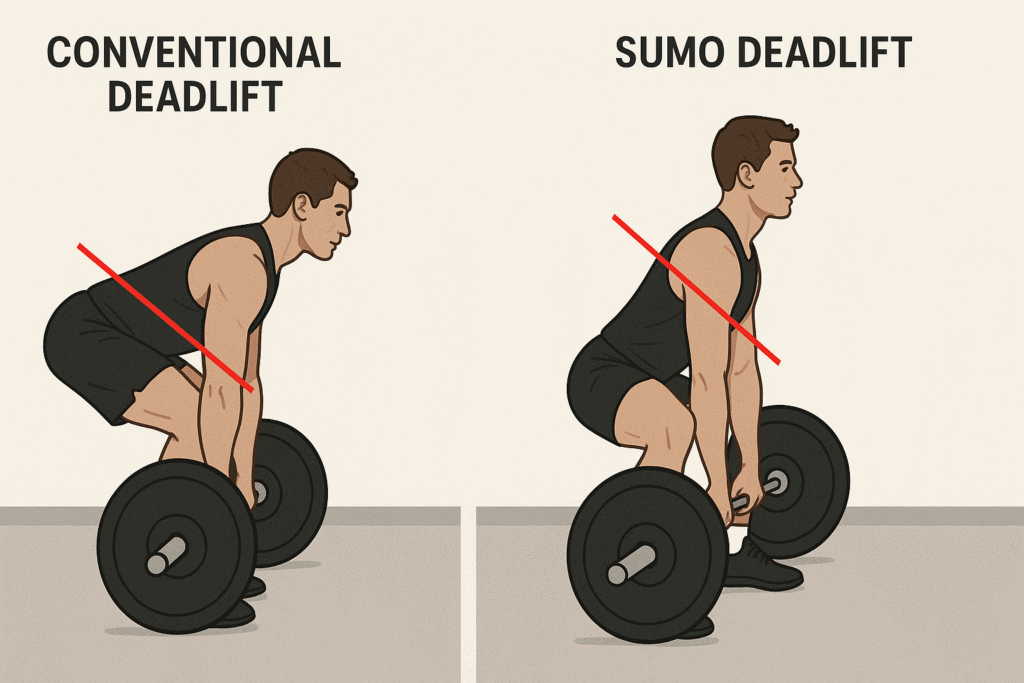
Common Sumo Deadlift Mistakes
- Knees caving in: Keep knees aligned over toes throughout the movement
- Too narrow stance: Ensure your stance is wide enough to allow proper form
- Leaning forward: Maintain a more upright torso compared to conventional
- Inadequate warm-up: The wide stance requires proper hip mobility
Conventional vs Sumo: Key Differences
Muscle Emphasis
Conventional Deadlift:
- Greater emphasis on hamstrings and erector spinae
- More hip flexion creates increased posterior chain involvement
- Higher demands on lower back muscles
Sumo Deadlift:
- Increased quadriceps and glute activation
- More knee flexion shifts emphasis to front of legs
- Reduced stress on lower back due to more upright position
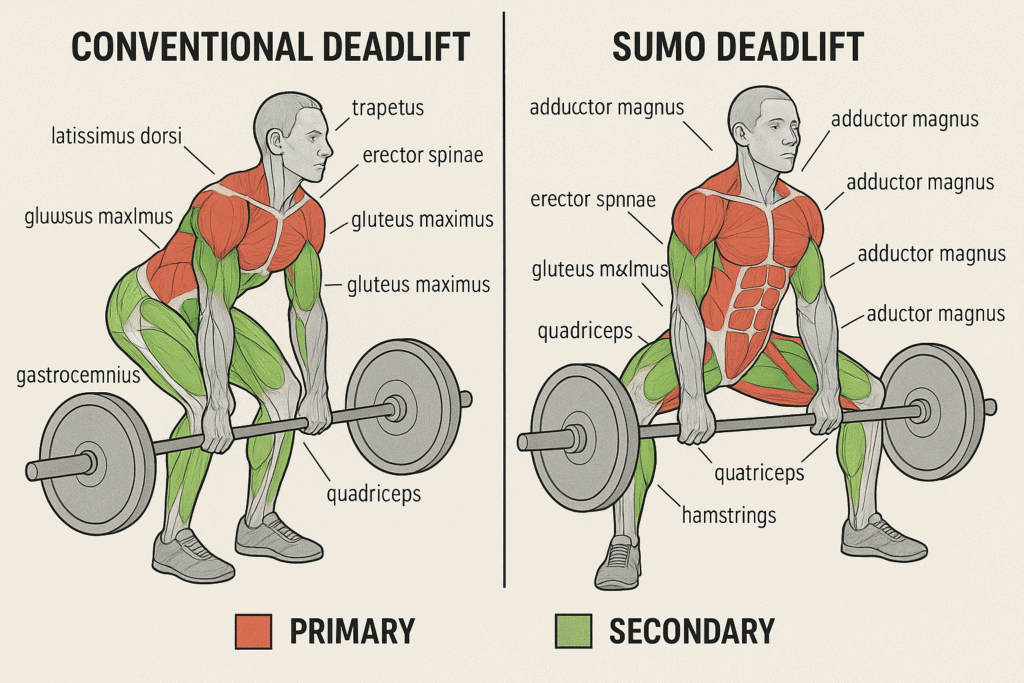
Range of Motion
Sumo deadlifts typically involve a shorter range of motion due to the wider stance and more upright torso position, while conventional deadlifts require the bar to travel a greater distance.
Individual Suitability
Your choice between conventional and sumo should consider:
- Limb proportions: Longer torsos may favor sumo style
- Hip mobility: Sumo requires greater hip flexibility
- Personal preference: Some individuals simply feel stronger in one style
- Training goals: Both styles offer unique benefits
Programming Considerations
Beginner Recommendations
Start with conventional deadlifts to learn the fundamental hip hinge pattern before progressing to sumo variations. Focus on proper form with lighter weights before increasing load.
Frequency and Volume
Most lifters benefit from deadlifting 1-2 times per week, allowing adequate recovery between sessions. Begin with 3-5 sets of 3-8 repetitions, adjusting based on your experience level and goals.
Progression Strategies
- Linear progression: Add 2.5-5 pounds per week for beginners
- Percentage-based training: Use percentages of your one-rep max for intermediate lifters
- Periodization: Vary intensity and volume over time for advanced trainees
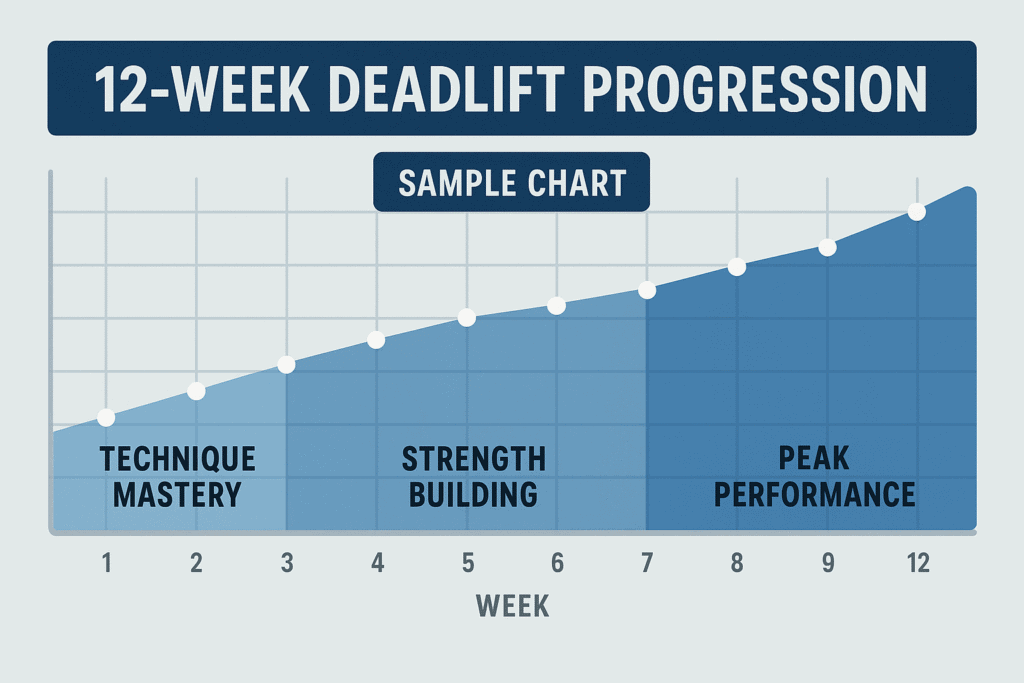
Safety Guidelines and Best Practices
Warm-Up Protocol
Always begin with a thorough warm-up including:
- Dynamic stretching for hips and hamstrings
- Glute activation exercises
- Light deadlift practice with bodyweight or empty barbell
Form Over Weight
Prioritize perfect technique over heavy loads. Poor form not only increases injury risk but also limits long-term progress.
Recovery and Rest
Allow adequate rest between training sessions and listen to your body. Deadlifts are demanding exercises that require proper recovery.
Troubleshooting Common Issues
Weak Lockout
If you struggle to complete the lift at the top, focus on:
- Hip thrust exercises to strengthen glutes
- Rack pulls from various heights
- Glute activation work
Difficulty Off the Floor
For problems at the bottom of the lift:
- Pause deadlifts to build strength in the starting position
- Deficit deadlifts to increase range of motion
- Strengthening your quads and improving ankle mobility
Back Rounding
Address rounded back issues through:
- Thoracic spine mobility work
- Strengthening your upper back and lats
- Practicing the hip hinge pattern without weight
Equipment Considerations
Essential Gear
- Proper footwear: Flat-soled shoes or barefoot for better ground contact
- Appropriate clothing: Fitted clothing that doesn’t restrict movement
- Belt (optional): Can provide additional core support for heavy lifts
Optional Accessories
- Lifting straps: For grip-limited sets
- Chalk: Improves grip without straps
- Knee sleeves: Provide warmth and light support
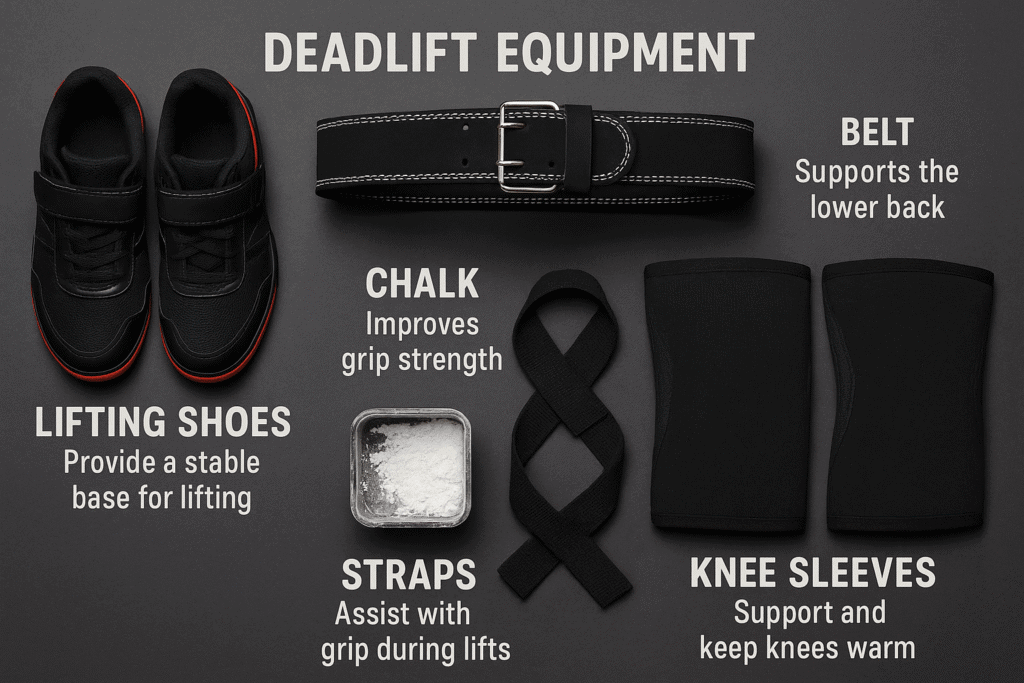
Conclusion
Mastering both conventional and sumo deadlifts provides you with versatile tools for building strength, muscle, and functional movement capacity. While the fundamental principles remain the same—maintaining proper form, progressive overload, and consistent practice—each variation offers unique benefits that can enhance your overall training program.
Remember that becoming proficient at deadlifting takes time and patience. Focus on learning proper technique first, gradually increase the weight as your form improves, and don’t hesitate to seek guidance from qualified trainers when needed. Whether you choose conventional, sumo, or incorporate both styles into your routine, the deadlift will serve as a cornerstone exercise for building total-body strength and power.
Start with lighter weights, master the movement patterns, and progressively challenge yourself as your technique and strength improve. With consistent practice and attention to detail, you’ll develop the skills necessary to deadlift safely and effectively for years to come.
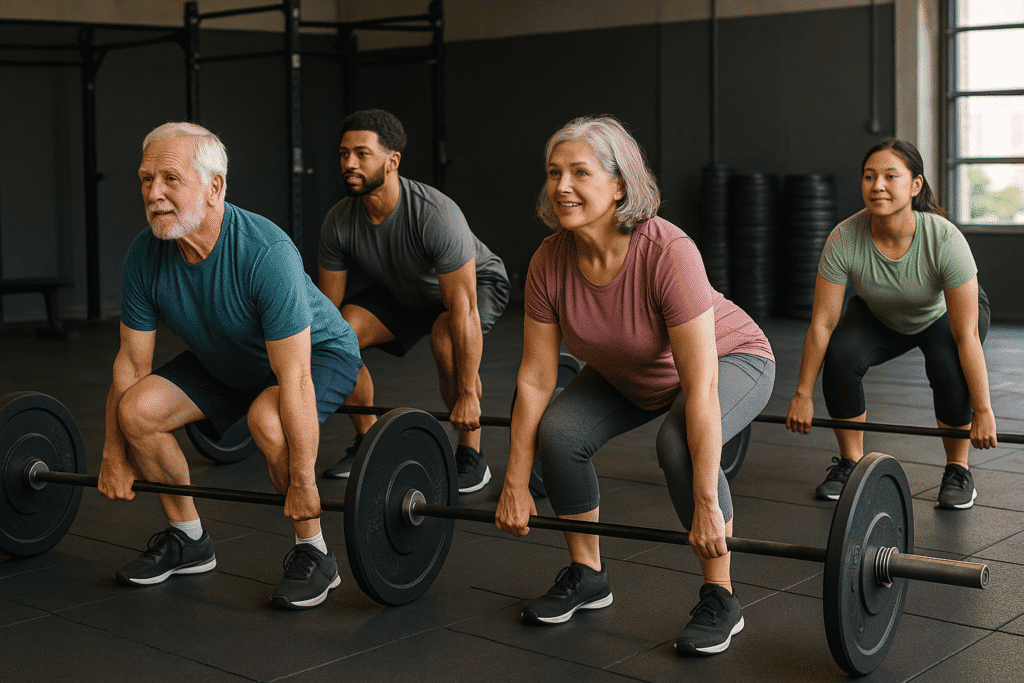
FAQs
Q: Which deadlift style is better for beginners – conventional or sumo?
A: Conventional deadlifts are generally recommended for beginners because they teach the fundamental hip hinge movement pattern more effectively. The conventional stance is more natural for most people and requires less hip mobility. Once you’ve mastered conventional form, you can experiment with sumo to see which style feels more comfortable and allows you to lift more weight safely.
Q: How often should I deadlift per week?
A: Most lifters should deadlift 1-2 times per week. Deadlifts are highly demanding on your nervous system and muscles, requiring adequate recovery time. Beginners might start with once per week, while more experienced lifters can handle twice weekly sessions. Always ensure at least 48-72 hours between heavy deadlift sessions.
Q: What’s the proper breathing technique for deadlifts?
A: Take a deep breath at the top (starting position), hold it throughout the lift to maintain core stability (Valsalva maneuver), and exhale at the top of the movement or during the descent. This breathing pattern helps maintain intra-abdominal pressure, protecting your spine during the lift.
Q: Should I use a lifting belt for deadlifts?
A: A lifting belt isn’t necessary for beginners or lighter weights. Consider using a belt when lifting 80%+ of your one-rep max or when performing heavy sets. The belt provides additional core support but shouldn’t become a crutch. Practice deadlifting without a belt regularly to maintain natural core strength.
Q: How do I know if my deadlift form is correct?
A: Key indicators of proper form include: neutral spine throughout the movement, bar staying close to your body, balanced weight distribution on your feet, and smooth, controlled movement. Consider recording yourself from the side, working with a qualified trainer, or having experienced lifters observe your technique.
Q: What’s the difference between mixed grip and overhand grip?
A: Overhand grip (both palms facing down) is symmetrical and easier on the biceps but may limit your lifting capacity due to grip strength. Mixed grip (one palm up, one down) allows heavier weights but can create muscle imbalances and increases bicep tear risk. Alternate which hand is supinated, or use straps for heavy sets with overhand grip.
